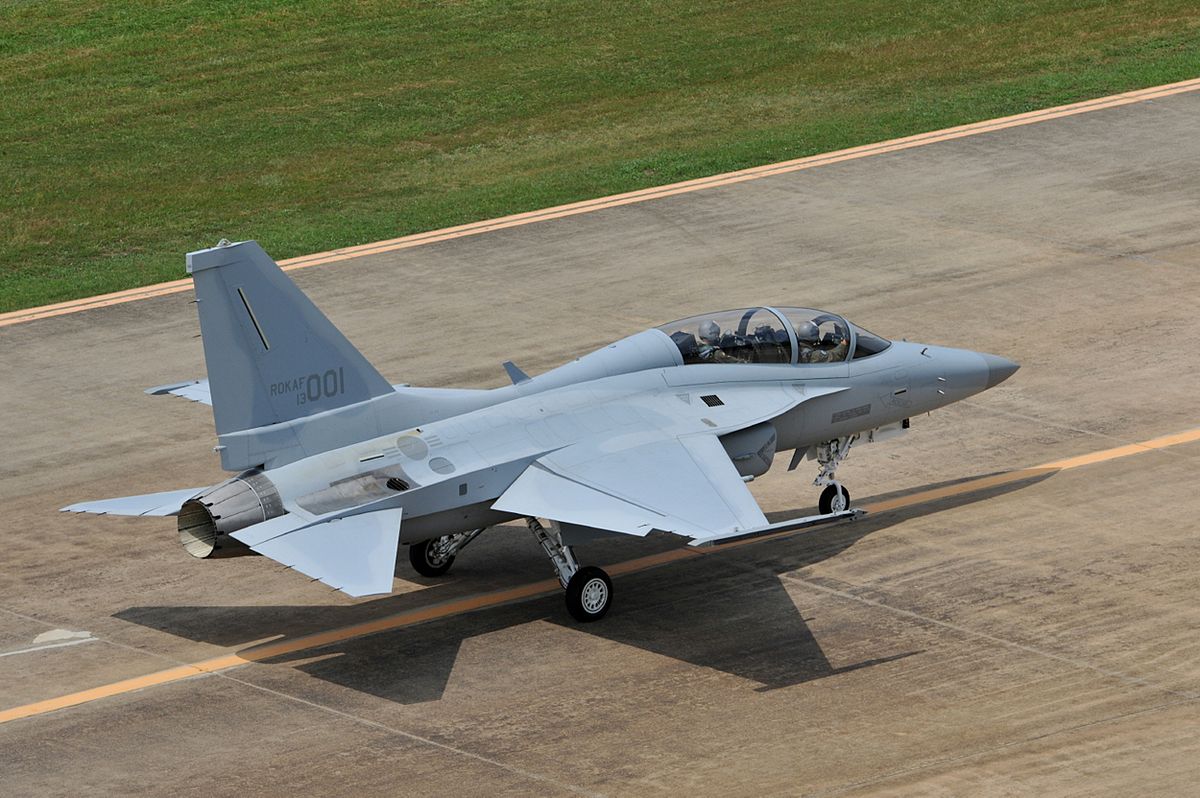In 2022 a somewhat surprising player emerged on the energy and arms market, which challenged the Americans who have been traditionally dominating the Polish market. Is Korea an alternative or a lever in negotiations with the Americans in many areas? – wonders Mariusz Marszałkowski, editor at BiznesAlert.pl.
American spree replaced by Korean
Nothing has fired up arms industry commentators in recent months more than the ever emerging reports of potential contracts for military equipment from Korea. After the American shopping spree, we are suddenly a shopping spree in Korea.
Economic relations between Poland and the Republic of Korea are long, and have not started at all in recent months. Suffice it to remind about the participation of the Korean Daewoo in the privatization of the Żerań Passenger Car Factory in the 90s, or the construction of a household appliances plant by LG. In recent years, the economic construction has expanded. In 2014, a contract was signed for the supply of Korean chassis from the K9 gun-howitzer for the construction of AHS Krab. What is worth emphasizing is that it weren’t only the chassis that were purchased at that time, but also a license for their production at the plants of Stalowa Wola, Foundry the manufacturer of AHS Krab. In 2016, the construction of the world’s largest electric car battery factory began, which is expected to produce more than a million car batteries a year. According to National Bank of Poland data from 2021, the total value of all Korean investments in Poland exceeds EUR 3 billion, and more than 550 Korean companies operate in Poland.
However, what we see in the context of economic relations with Korea in recent months is not even an evolution. This is a revolution, especially since it actually affects two industries.
American hegemon
In the military context, Poland has for years strongly relied on military cooperation with the United States. The first reason is purely practical – the construction of modern armed forces based on modern and proven military equipment. America is often engaged in various kinds of military activities, has technologies and equipment that has been tried and tested in practice. This has always put „made in USA” equipment at the forefront, before products from other manufacturers, which are often tested only in theory. The United States, as a country that spends the most in the world on its armed forces, has the funds and capabilities to create modern solutions for the needs of the Armed Forces. The second reason behind choosing Americans as suppliers of military equipment to modernize the Polish army is purely political. The United States is the guarantor of our security. The United States is considered the most reliable ally in the context of threats to our country from the East. It is also necessary to remember the strength of American companies themselves, which at various levels encourage decision-makers to purchase their products. This aspect is not without significance in the discussion over the purchases of military equipment. Lobbying and marketing is something that American companies excel at and often use to achieve their goals.
The intensification of purchases of equipment from the United States occurred after the United Right won the elections in 2016. While earlier the modernization cake was divided in a ratio of about one-third for European suppliers and two-thirds for the United States, the new government diverted the majority of foreign purchases of arm to US companies. An example of this is the purchase of M1A1 SEP v3 tanks, F-35 aircraft, M140 HIMARS missile launchers, Patriot OP-RAK systems, or multiple purchases of various types of aviation ammunition, including for F-16 jets. The government is also planning to purchase helicopters or large MALE-class UAVs, such as the MQ-9 Reaper in the future.
Purchases in the US, without proper tenders, negotiations and technology transfer, were often criticized by both the opposition and the expert environment of the arms industry. The government side was accused of the lack of adequate verification of equipment in the framework of competitive proceedings, or the lack of an appropriate degree of polonization, that is, the participation of the Polish arms industry in the implementation of defense contracts for the Polish army.
The lack of polonization means that the funds allocated for the modernization of the army will be transferred outside of Poland, without any possible impact on the economic development of our country. Americans are known for their rigorous approach to technology transfer. Poland, on the other hand, has a negative experience with the involvement of American arms companies in offset processes. The crowning example of this is the offset that was supposed to arrive to Poland when Warsaw bought F-16 jets, which was criticized by the Supreme Audit Office. It is worth noting that this choice was preceded by a competitive tender and written commitments. In recent agreements, there are few written commitments, but much more declarations, which \often end only in words.
Korean check mate?
Over the past year and a half, Korea has been half-heartedly mentioned as the potential partner for arms cooperation. In this context, the armored segment with the K2 tank was often mentioned. During this time, several visits were made by representatives of the Ministry of Defence, led by Deputy Minister Marcin Ociepa. However, the real „Copernican Revolution” took place after the Russian invasion of Ukraine. A few months after the Russian attack, the Korean media started to write more about the upcoming wide cooperation with Korea. Rumors and media leaks materialized at the end of July, when MON signed a framework agreement with representatives of the Korean arms industry regarding the acquisition of about a thousand K2 tanks (in the K2 variant and K2PL – polonized and produced in Poland version of the Korean tank), more than 680 gun-howitzers K9 (in the k9a1 and K9PL variant) and 48 combat training aircraft FA-50. The corresponding executive contracts were signed at the end of August for the delivery of the first 180 K2 tanks and 212 K9 self-propelled howitzers. In addition, the Ministry of Defense purchased a package of „tens of thousands of rounds of 155 mm ammunition”. The total value of both contracts exceeds USD 6 billion net. Also in August, the parties signed an executive agreement worth USD 3 billion to purchase FA-50 aircraft. However, this did not end the arms purchases in Korea.
At the end of October, the Ministry of Defense signed a framework agreement for the purchase of 288 K239 Chunmoo rocket launchers along with two types of ammunition – 239 mm caliber with a range of approx. 80 km and 600 mm ballistic missiles with a declared range of 290 km. The first executive contract for the supply of 218 K239 missile launchers was signed on November 4. According to the schedule, the first squadron (18 vehicles-launchers) will be delivered in 2023. The deal is expected to be completed by 2027 and has a net worth of USD 3.5 billion.
The media have been speculating that this is not the end of arms purchases in Korea. The pipeline reportedly includes heavy infantry fighting vehicles AS-21 Redback, wheeled armored vehicles K808, which would replace/complement the fleet of KTO Rosomak, as well as a bridge version of submarines under the Orka project.
Schedule, stupid!
Russia’s invasion of Ukraine dramatically accelerated the process of modernizing the military, but also changed the accents. Poland has helped Ukraine with numerous types of military equipment. The official data is unknown, but unofficially we have transferred and are transferring artillery systems (e.g. 122 mm 2S1 Carnation, or rocket 122 mm BM-21 Grad or modern AHS Krab), infantry fighting vehicles, T-72M/1R tanks, and other military equipment. To make up for the missing equipment, the Defence Ministry is determined to quickly replenish the transferred machinery. However, for America it is impossible to quickly deliver any orders. For comparison, 20 (18 „combat” plus 2 for training) M142 Himars, for which contracts were signed in February 2019, are to arrive to Poland only in 2023 – four years after the signing of the contract. At that time, in less than a year we are to receive 18 „Korean MLRS” or K239. The situation is similar with tanks. The first Korean K2 will arrive in Poland already in 2022 (originally intended for the army of the Republic of Korea), while the first Abrams tanks (in the target version Sep v3) from the contract signed in April 2022 are to arrive in Poland only in 2025. These long periods of delivery offered by American companies go against with the Defence Ministry’s plans, which wants to increase the potential of the Polish army „now”.
The Koreans are also a hope for the Polish defense industry. Due to the fact that their position on the global arms market is weaker and less well-established than America’s, their negotiating flexibility is different, because it gives a greater chance for the real development of the domestic arms industry. HSW’s experiences in cooperating with its Korean partner on polonizing the AHS Krab chasais are by and large positive. The perspective of transferring production technology, including missiles for the K239 system, elements of K2 tanks or the development of the aviation industry based on technology transfer during the construction of the FA-50, seems beneficial for Poland’s economic growth. This potential is much greater than in the case of possible cooperation with the Americans.
Is the Korean lever real?
While in the case of armaments, we can say that a lot of specific things are happening, so far the same cannot be said about the energy industry. Yes, a letter of intent was signed between ZE PAK, PGE and KHNP on the construction of a nuclear power plant in Pątnów, but at the moment there are a lot of unknowns. We do not know anything about the scope of the investment, its schedule or financing. These are to be presented by the end of the year. It is worth recalling that until recently, PGE had its own company responsible for the construction of a nuclear power plant, which was eventually bought by the State Treasury. Why, then, would a state-owned company suddenly want to build a nuclear power plant in Pątnów in cooperation with Zygmunt Solorz’s concern?
The Koreans appear to be an attractive partner when it comes to the atom, as they may be more determined, as in the case of arms contracts, than the other French and American bidders, and thus much more flexible in terms of possible technology transfer or financing. However, already some dark clouds are starting to appear over the project, due to the claims made by the American Westinghouse on the APR1400 reactor technology, developed by the Korean KHNP. KHNP’s position is also not being strengthened by what is happening to nuclear energy in Korea itself, as depending on political preferences the country shifts on domestic nuclear projects.
It is often said that one of the advantages of the Korean offer is what also impacted the arms contracts – short deadlines. KHNP is expected to implement its projects on time and on schedule. However, it must be remembered that KHNP has never implemented projects in countries that are in the European Union, with a very strict approach to issues such as the rights and working conditions of employees, as well as environmental, water, landscape and other issues that significantly affect the pace of investment. Regulatory problems within the EU often pose enormous challenges to European companies themselves, which have been active in this market from the very beginning. Some experiences, e.g. in the implementation of projects by Koreans when investing in the Grupa Azoty-Polimery Police plant, show that cooperation with Korean companies is not always all sunshine and rainbows. Sometimes schedules and cost estimates need to be updated, also in the case of investments carried out by these companies.
The pivot to Korea is a catchy slogan, but it doesn’t always mean a spectacular success. Experiences from the past, including at the FSO plant in Żerań, the negotiations on the location of the Hyundai/Kia car factory in Poland in 2004 (the factory was eventually built in Slovakia), and the implementation of some investments in Poland by entities from Korea dictate a cautious optimism in the approach to relations with this country. Regardless, it is worth negotiating and talking with companies from Korea. Probably many top managers from, e.g. American companies will now think twice before saying „no” to Polish proposals, when a representative from a Korean business will be next in line to knock at the door. Having an alternative is always beneficial, even if we don’t treat it as a sure bet.









